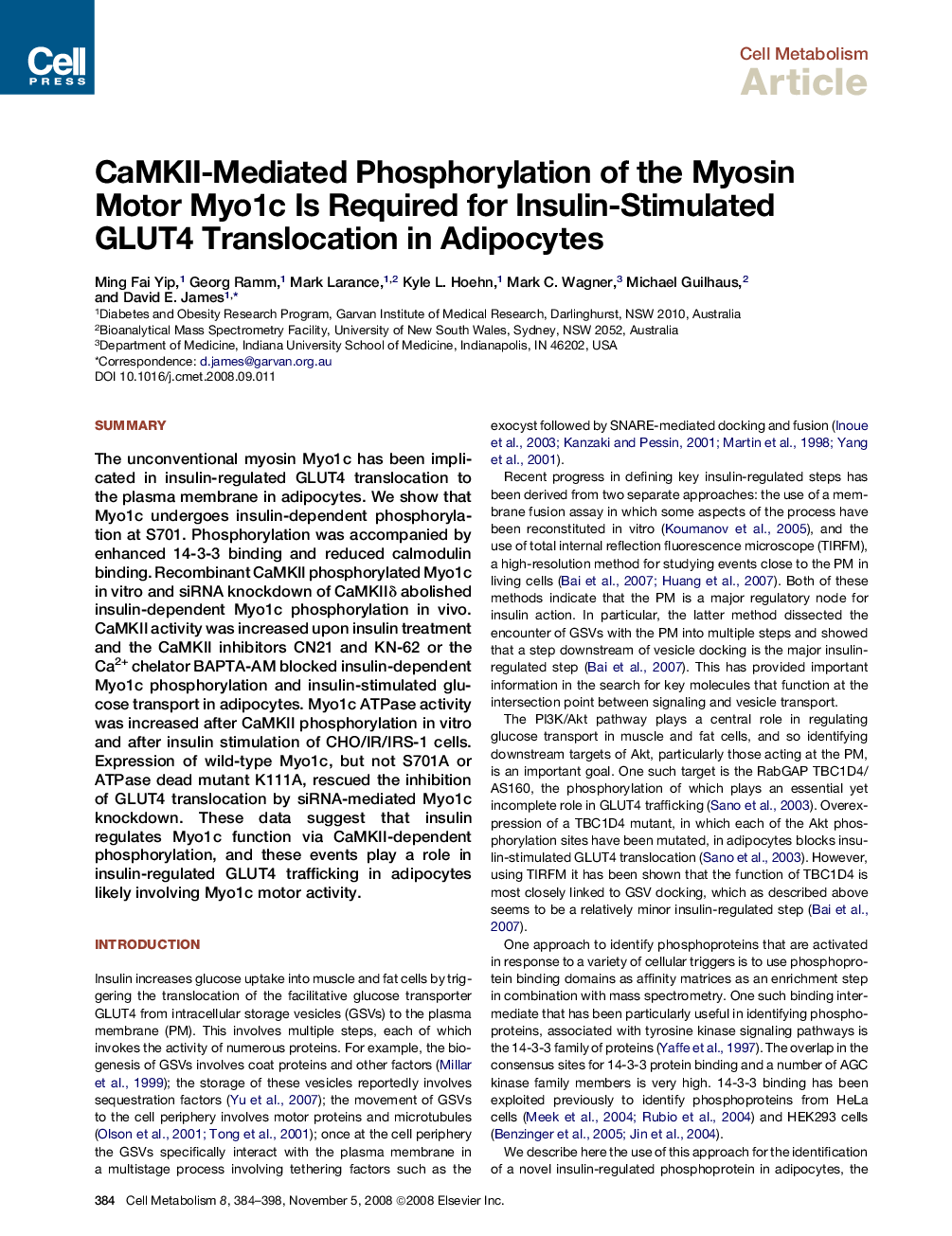| Article ID | Journal | Published Year | Pages | File Type |
|---|---|---|---|---|
| 2793185 | Cell Metabolism | 2008 | 15 Pages |
SummaryThe unconventional myosin Myo1c has been implicated in insulin-regulated GLUT4 translocation to the plasma membrane in adipocytes. We show that Myo1c undergoes insulin-dependent phosphorylation at S701. Phosphorylation was accompanied by enhanced 14-3-3 binding and reduced calmodulin binding. Recombinant CaMKII phosphorylated Myo1c in vitro and siRNA knockdown of CaMKIIδ abolished insulin-dependent Myo1c phosphorylation in vivo. CaMKII activity was increased upon insulin treatment and the CaMKII inhibitors CN21 and KN-62 or the Ca2+ chelator BAPTA-AM blocked insulin-dependent Myo1c phosphorylation and insulin-stimulated glucose transport in adipocytes. Myo1c ATPase activity was increased after CaMKII phosphorylation in vitro and after insulin stimulation of CHO/IR/IRS-1 cells. Expression of wild-type Myo1c, but not S701A or ATPase dead mutant K111A, rescued the inhibition of GLUT4 translocation by siRNA-mediated Myo1c knockdown. These data suggest that insulin regulates Myo1c function via CaMKII-dependent phosphorylation, and these events play a role in insulin-regulated GLUT4 trafficking in adipocytes likely involving Myo1c motor activity.
